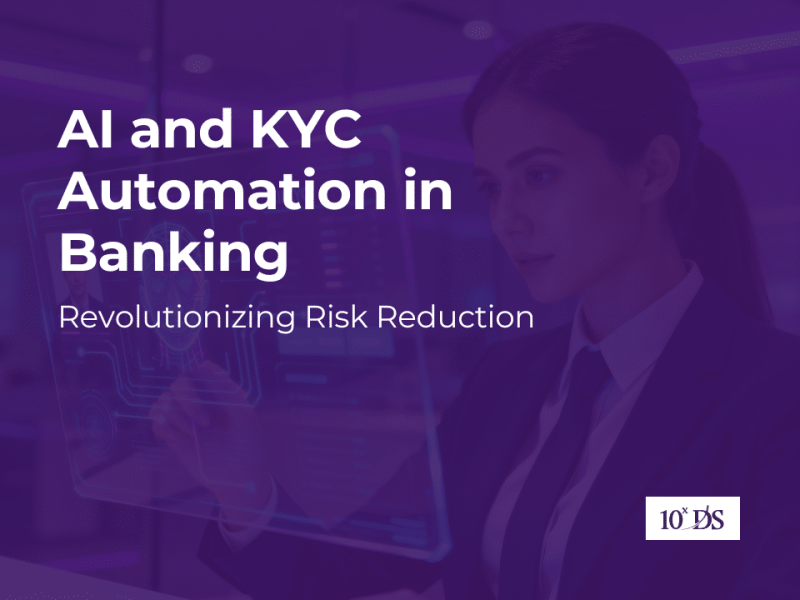
Navigating DevOps Maturity: Stages, Hurdles, and Proven Practices
As organizations increasingly adopt DevOps to streamline software delivery and improve operational efficiency, understanding where they stand in their journey becomes crucial. The DevOps Maturity Model offers a framework to assess the current state of DevOps practices, highlight areas for improvement, and guide future strategies. This blog explores the key stages of DevOps maturity, common challenges teams face, and best practices to achieve continuous improvement.
Understanding the DevOps Maturity Model
The DevOps Maturity Model is a roadmap that helps organizations evaluate how far they’ve progressed in implementing DevOps principles. It provides a structured way to assess practices across development, testing, deployment, monitoring, collaboration, and automation.
DevOps maturity isn’t about reaching a final destination but achieving a level of integration and efficiency that aligns with business goals. A mature DevOps organization consistently delivers high-quality software at speed, adapts to changes with agility, and fosters a culture of collaboration across teams.
Stages of DevOps Maturity
The DevOps Maturity Model is typically divided into five key stages: Initial, Managed, Defined, Measured, and Optimized. Each stage represents a higher level of adoption and integration of DevOps practices.
1. Initial (Ad-hoc)
At this stage, DevOps is either non-existent or very loosely practiced. Teams operate in silos, manual processes dominate the software delivery pipeline, and there’s minimal collaboration between development and operations.
- No standard CI/CD pipelines
- Infrequent and risky deployments
- Reactive incident management
- Low visibility and poor feedback loops
Organizations at this level often struggle with long release cycles, quality issues, and a lack of accountability. Change is usually driven by firefighting rather than strategy.
2. Managed
In the managed stage, some DevOps practices are introduced, but they are not standardized across the organization. Basic CI/CD pipelines may exist for some projects, and teams begin to see the benefits of automation and collaboration.
- Partial automation of builds and testing
- Isolated use of infrastructure as code (IaC)
- Dev and Ops begin collaborating on deployments
Though improvements are noticeable, inconsistency in tool usage and processes leads to bottlenecks. Teams often rely on a few key individuals with specific expertise, creating silos of knowledge and risk.
3. Defined
This stage marks a turning point. DevOps practices are documented, repeatable, and applied consistently across teams. Standardization becomes a priority, and culture begins to shift toward shared ownership.
- Version control, CI/CD, and IaC are widely adopted
- Monitoring and alerting systems are in place
- Automated testing is integrated into pipelines
- Regular retrospectives and continuous feedback loops
The focus is on reducing human error, increasing deployment frequency, and fostering cross-functional collaboration. At this level, organizations begin to realize tangible benefits such as reduced lead time and improved system reliability.
4. Measured
Here, organizations not only follow DevOps best practices but also measure their effectiveness. Data-driven decision-making becomes a core strategy, and teams are held accountable through key performance indicators (KPIs).
- Metrics like deployment frequency, lead time, mean time to recovery (MTTR), and change failure rate are tracked
- Continuous improvement initiatives are based on data insights
- Security is embedded in the development lifecycle (DevSecOps)
By systematically measuring outcomes, teams gain visibility into what works and what doesn’t, allowing for smarter investments in tooling, process refinement, and team development.
5. Optimized
In the optimized stage, DevOps is deeply embedded in the organization’s culture and operations. The focus shifts to innovation, resilience, and proactive problem-solving.
- Continuous deployment is standard practice
- AI/ML is leveraged for predictive analysis and automated remediation
- Cross-functional teams share end-to-end responsibility
- Failures are embraced as learning opportunities
An optimized DevOps organization exhibits a high degree of agility, rapidly responding to market changes and customer needs. This level of maturity is not common but represents the gold standard in software delivery excellence.
Challenges in Achieving DevOps Maturity
While the benefits of achieving DevOps maturity are compelling—faster delivery cycles, better collaboration, and improved product quality—the path to maturity is often filled with roadblocks. Organizations may initiate DevOps with enthusiasm, only to encounter resistance, confusion, and technical difficulties as they try to scale their efforts. Understanding these common challenges is essential for leaders and teams aiming to navigate the DevOps transformation more effectively.
1. Cultural Resistance
Among the most formidable challenges is the cultural shift that DevOps requires. Traditional enterprise environments are often built on rigid hierarchies and clearly divided roles—developers write code, operations maintain systems, QA tests functionality, and security reviews risks. DevOps, in contrast, encourages breaking down these silos to promote shared responsibility and tighter collaboration across the software delivery lifecycle. This philosophical change doesn’t happen overnight. Employees accustomed to working in narrowly defined roles may resist adopting new responsibilities, while managers may struggle to relinquish control or adapt to flatter team structures. Leadership buy-in is essential to foster a culture of openness, experimentation, and trust. Without it, even the most advanced tools and processes can fail to take root.
2. Tool Sprawl
The rapid growth of DevOps tooling has given teams access to a wide array of solutions for automation, monitoring, containerization, configuration management, and more. However, this abundance can quickly become a double-edged sword. When different teams adopt tools independently without centralized oversight or a coherent strategy, organizations end up with a fragmented toolchain that lacks integration and consistency. This so-called “tool sprawl” complicates onboarding, slows down workflows, and makes troubleshooting more difficult. Engineers may spend more time managing tools than improving product quality or user experience. To avoid this, organizations need to strike a balance between innovation and standardization, choosing tools that align with their goals and scale across teams while ensuring governance and maintainability.
3. Skills Gaps
DevOps maturity is as much about people as it is about processes and technology. To implement DevOps successfully, organizations need individuals who understand automation, cloud platforms, scripting languages, container orchestration, infrastructure as code, continuous integration, and more. Finding professionals with such a diverse and deep skill set can be difficult. Even when those individuals are hired, they may be quickly overwhelmed if the rest of the team lacks similar expertise. Upskilling existing staff is one approach, but it requires time, budget, and strong leadership support. Without sufficient training and knowledge sharing, DevOps initiatives often become dependent on a handful of experts, creating bottlenecks and risking burnout. Investing in team-wide education and mentorship is key to bridging these gaps and building a resilient, well-rounded DevOps culture.
4. Lack of Metrics
Many organizations attempt to improve DevOps practices without establishing clear metrics for success. This lack of visibility undermines their ability to identify problem areas or measure the impact of changes. Teams might feel like they are making progress—adopting new tools, shortening release cycles, or responding faster to incidents—but without quantitative data, these improvements are anecdotal and hard to validate. Metrics such as deployment frequency, lead time for changes, mean time to recovery (MTTR), and change failure rate provide a data-driven foundation for decision-making. They help pinpoint inefficiencies, track trends over time, and justify investments in tools or training. Without this foundation, organizations may invest in the wrong areas or fail to detect early signs of stagnation, ultimately limiting their growth.
5. Security Concerns
As organizations accelerate their deployment pipelines, the need for security integration becomes increasingly urgent. However, embedding security practices into the DevOps workflow—commonly known as DevSecOps—is often easier said than done. Security teams are traditionally seen as gatekeepers, focused on enforcing compliance and minimizing risk, which can conflict with the speed-oriented goals of DevOps. When security is treated as an afterthought or left until the final stages of development, it introduces vulnerabilities and delays. Moreover, legacy security processes are frequently manual and not designed to keep pace with continuous delivery pipelines. To overcome this, security must shift left—integrated from the earliest phases of development through automated testing and monitoring. This requires both cultural and technical changes, along with close collaboration between developers, operations, and security professionals.
Best Practices to Improve DevOps Maturity
Reaching higher levels of DevOps maturity requires more than just adopting tools or automating tasks. It demands intentional effort, thoughtful strategy, and an ongoing commitment to improvement across people, processes, and technology. As organizations move forward in their DevOps journey, a set of best practices can help accelerate progress, overcome obstacles, and ensure long-term sustainability.
1. Establish a Strong Foundation
One of the most critical steps in improving DevOps maturity is establishing a strong foundation. This means starting with the fundamentals—version control systems, automated build processes, continuous integration, and unit testing. These practices provide the structural backbone for more advanced DevOps capabilities. Without a reliable baseline, scaling DevOps efforts becomes chaotic and error-prone. Ensuring that all team members are trained in these tools and processes helps create consistency and reliability in software delivery. Laying this groundwork allows organizations to build with confidence as they integrate more sophisticated practices down the line.
2. Foster a Collaborative Culture
A collaborative culture is equally essential for success. DevOps is fundamentally a cultural transformation that breaks down silos between traditionally separate departments like development, operations, QA, and security. Encouraging open communication, shared goals, and cross-functional teamwork builds a sense of ownership and mutual accountability. Teams that operate in isolation struggle to deliver high-quality software quickly. Leadership plays a key role in modeling these values by promoting transparency, rewarding cooperation, and creating a psychologically safe space for teams to take calculated risks, experiment, and learn from failure.
3. Automate Where It Matters
Automation is another cornerstone of DevOps maturity. While not every task should be automated, prioritizing high-impact areas is vital. Automation of CI/CD pipelines, environment provisioning, and testing workflows—such as unit, integration, and regression tests—can significantly reduce manual errors and accelerate release cycles. Similarly, automated monitoring, alerting systems, and security scans help maintain stability and compliance without adding unnecessary overhead. Automation frees teams to focus on strategic work rather than repetitive, error-prone tasks, while also making processes more predictable and reproducible.
4. Integrate Feedback Loops
Integrating continuous feedback loops throughout the software delivery lifecycle enables faster decision-making and ongoing improvement. Feedback should flow not only from system monitors and test results but also from stakeholders and end-users. Code quality assessments, performance metrics, and user behavior data should be easily accessible to all relevant team members. When feedback is timely and actionable, teams can identify issues early, iterate quickly, and avoid larger problems down the road. This responsiveness is key to maintaining agility in complex environments.
5. Adopt DevSecOps Principles
Adopting DevSecOps principles is essential as security becomes increasingly critical in today’s fast-paced development cycles. Security should not be bolted on at the end of the process, but rather embedded into every stage of development and deployment. By integrating security tools into pipelines, automating vulnerability scans, and promoting secure coding practices, organizations can minimize risks without compromising speed. Training developers and operations personnel to think like security professionals fosters a proactive mindset that aligns safety with agility. This shift helps ensure that security becomes a shared responsibility rather than a bottleneck.
6. Use Metrics for Continuous Improvement
Another important best practice is the use of metrics to drive continuous improvement. DevOps success must be measurable to be manageable. Tracking key indicators such as deployment frequency, lead time for changes, change failure rate, and mean time to recovery (MTTR) gives teams the insight they need to evaluate performance and identify areas for improvement. However, metrics should be used constructively—not as tools for blame, but as a compass for learning. Regularly reviewing these indicators in team retrospectives supports informed decision-making and continuous evolution of practices.
7. Encourage Experimentation and Learning
Finally, mature DevOps organizations cultivate a culture of experimentation and learning. Rather than fearing failure, they view it as an opportunity to improve. Practices like chaos engineering, game days, and post-mortem analyses of incidents help build system resilience and deepen team expertise. Creating a safe environment for trial and error empowers individuals to innovate and take ownership. Investing in ongoing training, certifications, and knowledge-sharing sessions not only boosts technical proficiency but also strengthens the collective capabilities of the team.
DevOps Maturity is a Journey
Achieving DevOps maturity is not a one-size-fits-all process. It’s a continuous journey that involves cultural change, technical evolution, and strategic alignment. By understanding the stages of maturity, identifying common challenges, and applying best practices, organizations can build a robust, high-performing DevOps capability. Organizations that commit to this journey see significant benefits—faster delivery, higher quality, lower risk, and happier teams. Whether you’re just starting out or aiming to optimize your DevOps strategy, the maturity model offers a valuable framework to guide your transformation.


